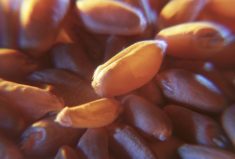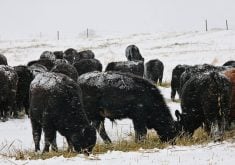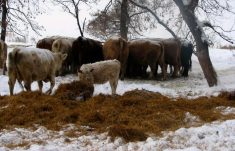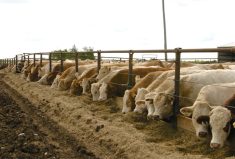Knowing the moisture content of feeds is key when comparing prices.
“The summer of 2019 was extremely challenging for anyone trying to put up dry forage,” said farm business management specialist Ted Nibourg.
“More often than not, hay and greenfeed were baled at moisture contents greater than normal. In an attempt to salvage forage production this summer, many producers opted to take their crop off as haylage by wrapping or bagging the bales.”
Adding to the challenges of this year’s forage crop is the variation in moisture content of haylage. Specialists at the Ag-Info Centre are receiving reports of moisture contents ranging between 20 and 65 per cent moisture, with 35 to 80 per cent dry matter.
Read Also

Farming Smarter receives financial boost from Alberta government for potato research
Farming Smarter near Lethbridge got a boost to its research equipment, thanks to the Alberta government’s increase in funding for research associations.
This broad range of moisture content is proving problematic when trying to compare prices between different sources of feed, said Nibourg. However, the easiest way to compare prices is to base the price on a dry matter basis.
“Current greenfeed prices are ranging between $100 and $120 per ton, or 2,000 pounds. That converts to five to six cents per pound,” he said. “Dry greenfeed usually consists of 15 per cent moisture or 85 per cent dry matter. A ton of greenfeed therefore, contains 1,700 pounds of dry matter. On a dry matter basis, that greenfeed is valued at 5.8 to seven cents per pound.”
Conventional silage is very similar.
“Silage is currently priced at $50 to $55 per wet ton in the pit,” he said. “The dry matter content of silage is 35 per cent. A ton of silage contains 700 pounds of dry material, which translates to between 7.1 and 7.8 cents per pound.”
The moisture content has a big impact on the value of a bale, he said.
“If, for example, you were considering some 1,500-pound bales put up at 40 per cent moisture you would have 900 pounds of dry matter. Using the previous dry matter price range of 5.8 to 7.8 cents per pound, those bales should range in price between $52 and $70 per bale.
And consider moisture content when hauling bales.
“The price of hauling dry matter home will be cheaper for bales containing 40 per cent moisture as opposed to bales that have 60 per cent moisture. You would be hauling an extra 300 pounds of water per bale if the moisture content of those 1,500-pound bales was 60 per cent.
“There is very little profit in hauling water.”















